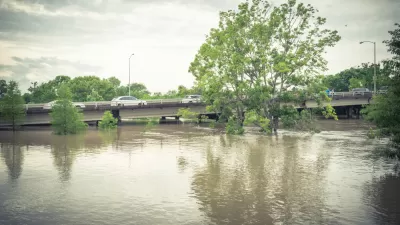Comparing Houston in 2010 to the city today reveals a variety of transportation, infrastructure, and economic changes.

The Kinder Houston Area Survey, conducted annually over the last 38 years, offers useful insight into how Houston has evolved and changed over the last decade. "It’s an important and unique historical record of time and place allowing for longitudinal analyses of the city and surrounding region," writes Andy Olin.
Over the 2010s, Houston expanded its bus and light rail networks, and it launched a bikeshare program in 2012. Support for public transit has grown since 2010, when just over half of respondents to the survey said that transportation funding should go toward public transit. In 2018, 61 percent "said a mass transit system is 'very important' to the future success of Houston," reports Olin.
Houston has more green space now, including a number of upgrades to and expansions of the city’s parks and hiking and biking trails. Public opinion about climate change has shifted as well, particularly after the city was devastated by Hurricane Harvey in 2017. "[In 2010,] only 39% of survey participants saw the threat of climate change as a 'very serious problem.' By 2019, that proportion grew to 53%," writes Olin.
While the Houston economy is relatively strong and unemployment has dropped in the last decade, poverty and economic hardship continue to be issues, says Olin. "Support for government programs to address inequalities in America has risen steadily in the past decade. The proportions who agree the government should take action to reduce income differences went from 45% in 2010 to 66% in 2018."
FULL STORY: How Houston has changed — and stayed the same — in the past 10 years

Planetizen Federal Action Tracker
A weekly monitor of how Trump’s orders and actions are impacting planners and planning in America.

Maui's Vacation Rental Debate Turns Ugly
Verbal attacks, misinformation campaigns and fistfights plague a high-stakes debate to convert thousands of vacation rentals into long-term housing.

Cuomo Is the Candidate of Both NIMBYs and Developers. What Gives?
In the New York City mayoral race, odd bedfellows align to preserve the housing status quo.

San Antonio and Austin are Fusing Into one Massive Megaregion
The region spanning the two central Texas cities is growing fast, posing challenges for local infrastructure and water supplies.

Charlottesville Temporarily Has No Zoning Code
A judge ordered the Virginia city to throw out its newly revised zoning code, leaving permitting for new development in legal limbo.

In California Battle of Housing vs. Environment, Housing Just Won
A new state law significantly limits the power of CEQA, an environmental review law that served as a powerful tool for blocking new development.
Urban Design for Planners 1: Software Tools
This six-course series explores essential urban design concepts using open source software and equips planners with the tools they need to participate fully in the urban design process.
Planning for Universal Design
Learn the tools for implementing Universal Design in planning regulations.
Heyer Gruel & Associates PA
JM Goldson LLC
Custer County Colorado
City of Camden Redevelopment Agency
City of Astoria
Transportation Research & Education Center (TREC) at Portland State University
Jefferson Parish Government
Camden Redevelopment Agency
City of Claremont





























